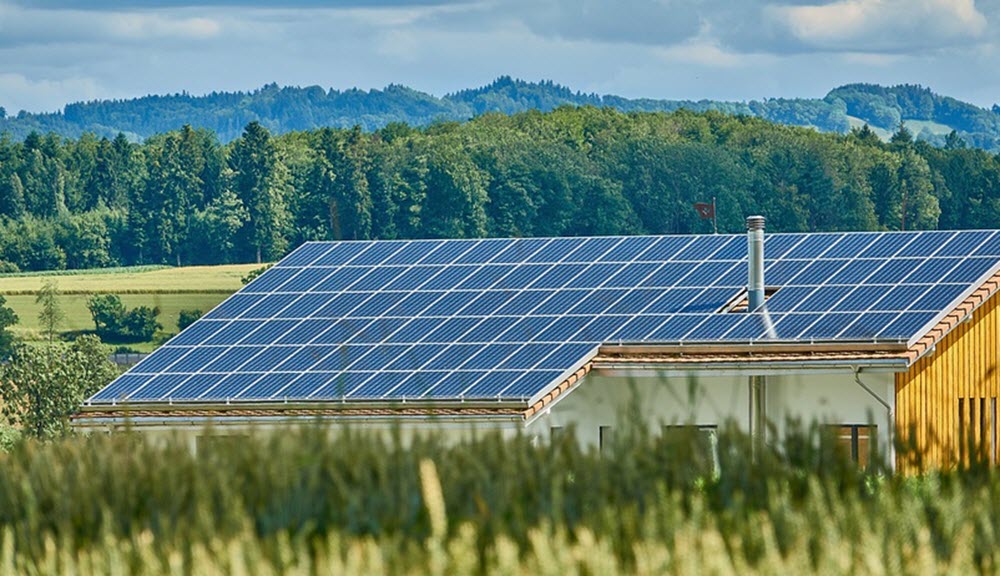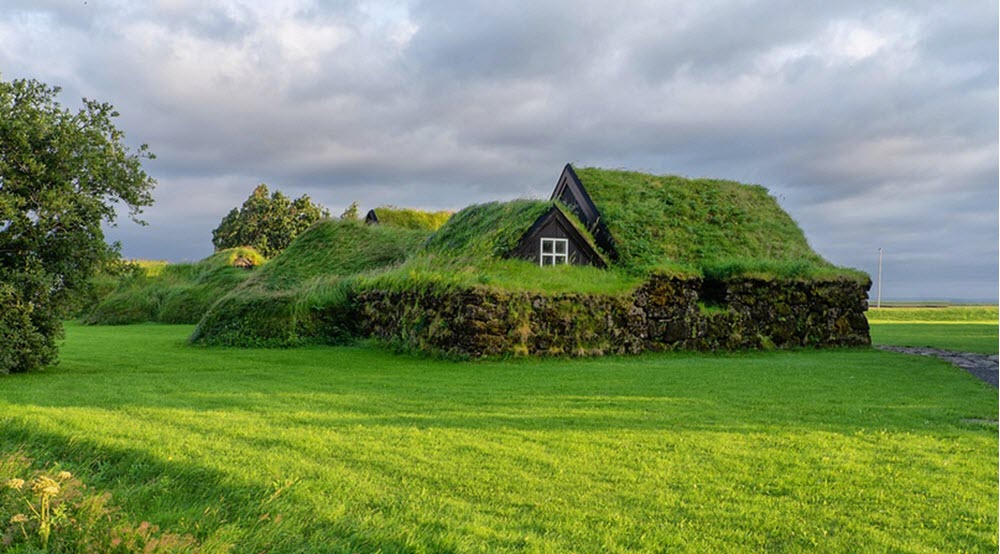– Active solar heating systems involve mechanical and/or electrical devices.
– Passive solar heating systems rely on making certain parts of the building – such as walls, windows and floors – collect, store, reflect and/or distribute solar heat energy during the cold season and reject solar heat energy during the warm season.
For a passive solar building to work well it must be designed with local conditions in mind, both regarding climate and the specific building site and house orientation.
Passive solar designs can be added to an existing building, but the project will be more complex and have extra limitations since certain aspects of the building can not be changed (e.g. orientation).
Examples of design elements to consider for a passive solar building in a temperate climate
- Orientation of the building. Thermal heat is best captured on the side facing the equator, or a few degrees to the east to capture the morning sun. Deviation from ideal orientation and north–south/east/west aspect ratio can reduce thermal performance. Extending the building dimension along the east-west axis can improve its energy efficiency.
- Placement of room types
- Placement and size of windows, as well as glazing (triple-glaze will insulate better) and frame insulation.
- Windows should ideally face the midday sun, but also have a shading solution available for the summer season when direct midday sun could make the house too warm. Windows should ideally be smaller or even non-existing on the other sides of the building, especially towards the west. Exterior and/or interior window shutters can be helpful if you want to have windows in all directions.
- Having a lot of window area will increase the risk of overheating in the summer and excessive heat-loss in the winter.
- Skylights, if included, should be designed in a way that makes it easy to reduce thermal losses through them at night, especially during the cold season.
- Roof overhangs can be used to provide shade, but it is important that they are correctly sized and suitable for local conditions to avoid blocking heat too much during the cold season.
- Other examples of possible shading elements are trees, shrubs, trellises and fences/walls.
- Placement of internal and external doors
- Insulation is very important to minimize seasonal heat gain and heat loss. It is a good idea to investigate (and possibly combine) several types of insulation, e.g. both radiant barriers and bulk insulation.
- Trombe walls and similar thermal mass objects can be utilized to store solar heat during the day and let it radiate into the building during the night.
- A green roof can work as a radiant barrier
- Be wary of open staircases, since they can lead to unequal distribution of warm air between the upper and lower floors.
The three primary passive solar energy configurations
- Direct solar system
- Indirect solar system
- Isolated solar system
Direct solar system
In a direct-gain passive solar system, the indoor space catches sun heat, absorbs sun heat and distributes sun heat.

Indirect solar system
The trombe wall is a common example of an indirect-gain passive solar system, since the thermal mass wall is placed directly behind one or more sheets of glass facing the equator. The indoor space that needs the heat will be directly behind the thermal mass, so there is no direct heating as the thermal mass wall blocks sunlight from entering the space.
It should be noted that even tough thermal walls are common, they are not the only example of thermal mass solutions for indirect solar systems. For instance, some buildings utilize roof ponds to capture heat.
Isolated solar system
In an insulated gain passive solar system, the components – such as the sun heat collector and the thermal storage component – are isolated from the indoor area.
One common example is the attached solar room; a window-rich interior space that can be completely closed of from the rest of the building as needed. The solar room make use of both direct-gain and indirect-gain.
One reason why solar rooms have become so popular is that they expand the useful living area of the building, and can be used to grow food, medicinal plants and air-cleaning plants during all or parts of the year.
Movable insulation such as shades, shutters and window coverings can be utilized to help keep warm air in during the dark hours. They can also come in handy during especially hot days.


